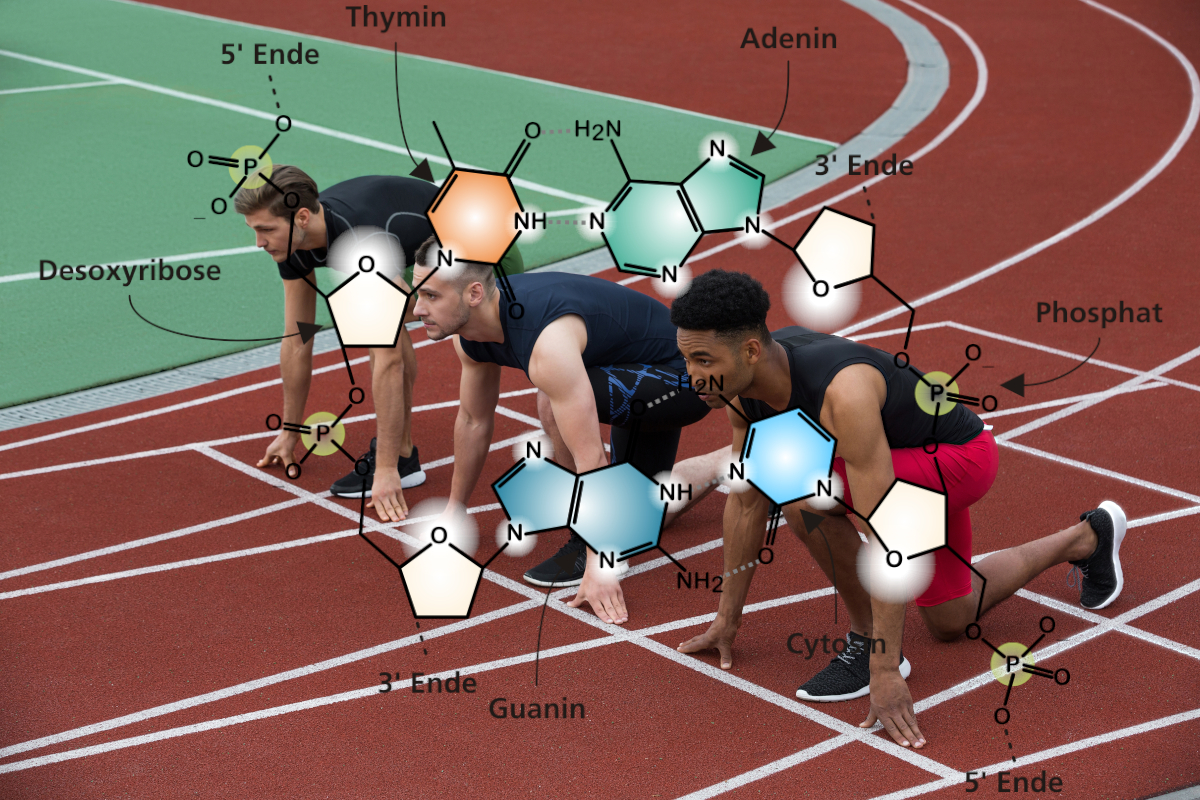
The predisposition to perform well in sports is an extremely complex issue, influenced by genetic as well as environmental factors. Can we then talk about such a thing as sports genes?
As shown by the results of over 20 years of research, certain genes can be distinguished, which are connected with sports achievements and which influence motor abilities, such as speed, endurance or strength.
To date, about 200 genetic polymorphisms have been identified that are directly related to physical activity. More than 20 of these have been compared with the performance of athletes. The sports genes that are most closely related to power, speed, and endurance are ACE and ACTN3. Genetic screening tests to predict injury risk and gene doping are also worth mentioning here. More about them – in the next part of the article.
The aforementioned ACE gene encodes the structure of sarcomeric protein, which we encounter only in fast twitch muscle fibers. They are responsible for activities that require high power and explosive movements that require high speed. The recessive allele is desirable for people who train in strength sports. RR genotype is very often encountered in strength and powerlifting athletes. As for the XX genotype, it is associated with a reduction in muscle strength and less ability to sprint.
The ACE gene is responsible for encoding the enzyme that converts angiotensin. D ACE was the world’s first genetic polymorphism associated with athletic performance. It is responsible for differentiating ACE activity, which regulates blood pressure, contributing to cardiovascular and respiratory performance. Allele I is associated with performance in endurance sports and allele D with power and strength. The former is associated with low serum and tissue ACE activity. This results in increased muscle performance in marathon runners, long-distance swimmers, rowers, and mountain climbers.
In 2004, genetic doping was listed by the World Anti-Doping Agency and categorized as “non-therapeutic use of genes and/or cells that have the ability to enhance athletic performance.” It is worth realizing that gene doping can contribute to a much greater improvement in athletic performance than is the case with its pharmacological version. The proteins used here are insulin-like growth factor, erythropoietin, myostatin and leptin.
Notable is the hormone EPO secreted largely by the kidneys, it contributes to increased erythropoiesis, thus improving blood oxygen carrying capacity and endurance in athletes. Myostatin gene deletion and IGF-1 gene insertion can result in increased strength and muscle mass.
Another hormone, leptin, in turn, is responsible for inducing a feeling of satiety. It can be used for faster weight loss and hunger reduction. Vascular endothelial growth factor can be manipulated to effectively increase blood flow to the muscles, lungs and heart, contributing to increased immunity and endurance.
Genetic doping can carry a number of dangers. It is worth mentioning here, among other things, that the increase in EPO levels may lead to the occurrence of cardiac arrest or stroke. Moreover, this gene insertion is not able to satisfy the physiological need for deletion when necessary.
Taking advantage of the continued hiatus in the organization of sporting events another portion of “doping knowledge …
Published by Play Fair Wednesday, April 22, 2020
Featured photo: Freepik / DNA_chemical_structure.svg: Madeleine Price Ball, User:Madprimederivative work: Lycidas, CC BY-SA 2.5, via Wikimedia Commons